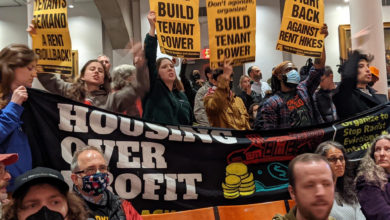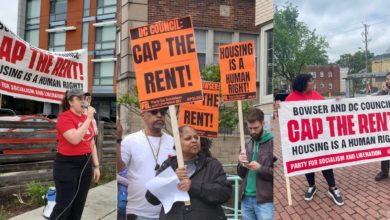In Boston and elsewhere in the United States, there is a tendency in the press to characterize the current economic and eviction crisis as something unexpected or mysterious. But as the winter approaches in Massachusetts, the overcrowded homeless shelters in Boston anticipate a flood of newcomers as the Center For Disease Control’s eviction moratorium is lifted. The Housing Court anticipates that 20,000 eviction cases will be filed immediately, but the actual number of households at risk will be much higher in subsequent months.
On Dec. 31, the moratorium’s end date, Greater Boston’s landlords will prepare to send out an expected 120,000 eviction notices, according to a report by the Metropolitan Area Planning Council. The Massachusetts Landlords Association vaguely estimates the number to be in the hundreds of thousands.
An eviction moratorium only delays the expected mass evictions. It does nothing to address the thousands of dollars of rent tenants have accumulated while unemployed due to the COVID-19 pandemic. In August, 300,000 Massachusetts renters reported having “no confidence” that they could pay their rent. Statewide shutdowns of businesses and workers prioritizing their own safety have led to an increased unemployment rate from around 3 percent prior to the pandemic to 17.7 percent in July. That month, Boston had the highest unemployment rate among all major cities in the United States.
A general economic crisis will only worsen issues in housing assistance. Despite state tax collections falling 29 percent since March, Massachusetts has continued to run off of last year’s pre-pandemic budget. Millions of dollars in state housing, subsidies and Section 8 vouchers are at risk. Before the pandemic, there were already thousands of people on the Housing Authority waiting lists for vouchers. Many have been waiting for upwards of eight years. That number will only increase in upcoming months.
This crisis is not new for Boston, and I’ve seen it firsthand. Five years ago, my own apartment complex in Malden, MA, conducted nearly 100 evictions. Far more painful to me was the eviction of my 80-year-old aunt from her subsidized unit in 1979. Her landlord raised her rent by a single dollar so he could void her Section 8 subsidy. I remember her telling me that she couldn’t understand how anyone could be so cruel, and without a home she was dead within a month.
Between 2015-2017, there were over 5,000 eviction proceedings in the Boston Housing Court resulting in the evictions of 2,000 households. Those in subsidized housing fared worse than those paying higher rents in private housing. In 2017, Section 8 housing voucher holders were evicted at twice the rate of those living in private households, even though they are only required to pay 30 percent of their income towards rent. Many of these voucher holders’ only source of income is a monthly social security check. So even with the subsidized rent, this only leaves a few hundred dollars per month for all utilities, childcare, food and other expenses. Under this system, any slight financial trouble could lead to the loss of a home.
Roughly half of Boston renters are ‘rent burdened’
In Boston, roughly half of all renters are considered “rent burdened” by the Department of Housing and Urban Development, meaning they pay more than 30 percent of their incomes towards rent. It is no surprise that a majority of these burdened renters live in working-class neighborhoods such as Roxbury or Dorchester.
Even when the economy is supposedly booming, many workers are unable to afford skyrocketing rents. This is not a failure of the system, but a function of it. As businesses compete with one another, they seek to drive production costs down as far as possible in order to make the most profit. For workers, this leads to layoffs and lower wages. Only socialism, which exists to meet the needs of people and eliminate profit can ultimately resolve the housing crisis.
Liberation Photo: Dylan Gamez Citron






